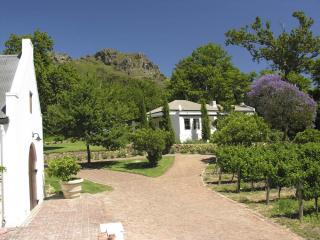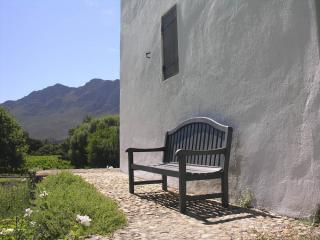Sarah Ahmed's 50 Great Portuguese Wines - The Whites
POSTED ON 15/02/2010Was it just coincidence I wonder that on the same day Vini Portugal put on a tasting in London of ‘50 Great Portuguese Wines’ chosen by Sarah Ahmed, the news from Lisbon was that researchers are working at finding a practical new use for cork: making the wings of a plane from compressed cork as a response to losing market share (to 70 – 75% from 90% in the 1990s) to screwcaps and plastic closures. Not that there was a screwcap or plastic closure on one single bottle of the 50 selected for the tasting.
When I queried this with one or two producers, I was looked at as if I’d just asked if they’d mind if I slept with their wives, or husbands in one case. Unthinkable. That wasn’t my only beef. As the wine world debates sustainability and lighter bottles, there were some inordinately monstrous bottles on display, those from Pêra-Manca, Quinta dos Roques (nice wine, shame about the bottle), and Encontro weighing in at an estimated 1.2 kilos empty. Ok that’s enough complaining. How about the liquid in the bottle?
More dry whites than you usually see from this neck of the Iberian woods, which was good to see. If you’ve ever been to Lisbon or Oporto and drunk a dry Portuguese white with the local seafood, you know just how deliciously refreshing they can be, and yet it always seems a struggle to find the sort of range and quality available to the Portuguese back here. Not surprisingly Vinho Verde featured strongly and Sarah Ahmed rightly made no apology for that. There were some lovely fresh wines made from the alvarinho grape, full-bodied and ripe yet also refreshing, the Portuguese alter ego of Galicia’s albariño., among them Anselmo Mendes’ 2008 Contacto, Quinta do Louridal’s 2007 Poema and Vinu Soalleirus’ 2008 Soalheiro Primeiras Vinhas.
Vinho Verde certainly doesn’t have a monopoly on good Portuguese dry white. The Maria Gomes and Bical grapes blended together showed well in Bairrada's almost viognier-like 2007 Quinta das Bageiras, Garrafeira from Mario Sergio Alves Nunes, while Quinta de Saes’ 2008 Quinta de Saes Reserva from Dâo, with its smoky, Grave-like fruitiness, was a very good food wine, if perhaps showing a tad more oak than you’d like. I really liked Jorge Moreira’s fresh, clean, grapefruity 2008 Po de Poeira made from alvarinho and gouveio in Terras Durienses and thought that Dirk Niepoort’s 2008 Redoma Reserva Branco from the Douro (a blend of rabigato, codega donzelinho, viosinho, arinto, and other even more obscure local varieties), was excellent. So too, despite the stupid heavy bottle, the 2007 Pêra-Manca from the Alentejo.
Despite my admiration for the quality of Portugal's new wave dry white styles made from exciting native varieties, it’s to the reds you turn to find Portugal’s best expression and I wasn’t disappointed. Or rather, I was disappointed with a few wines, but overall, there was sufficient variety of style and quality to make you sit up and take note. I suppose if I had one carp here it’s that so many of the wines were on the expensive side for your average punter. Maybe what Portugal should consider, or at least those organizing this excellent tasting, is the idea of showing 25 wines under a certain price point, say £10, and 25 over. It might just take a bit longer to put together but you’d hope Portugal would be able to come up with 25 really good wines under £25. Well, we all live in hopes. Ok, I’m off to Australia now, so I’ll deal with the reds in part 2.
 Boekenhoutskloof
Boekenhoutskloof
THE CHOCOLATE BLOCK 2008
This Western Cape red from Boekenhoutskloof’s Marc Kent is always delicious and always in short supply. A vibrant Rhône–style blend of syrah, grenache, cabernet sauvignon, cinsault and viognier, it simply has lovely ripe dark red and black fruits (but no chocolate despite the name) untrammeled by new oak and very much represents the new wave of South African red. No doubt as The World Cup approaches, it will become even more scarce. You may find it in Oddbins, £19.99, or £15.99 by the case, which can be mixed, www.waitrosewine.com, £16.99, and also at smaller independents like The Wine Library, £19.99 / bottle or £113.95 / 6 pack ( 020 7841 0415; www.winelibrary.co.uk).
The syrah comes from dry farmed vineyards in Malmesbury, the grenache noir (from some of the oldest in the country) is sourced from Citrusdal with its sandy soils and was matured in 600 litre barrels to retain fruit and freshness. The cabernet sauvignon and viognier come from Boekenhoutskloof's organically farmed vineyards and the cinsault is from old bush vines on decomposed granite soils on Welbedacht in Wellington. The wine matures in 2-3 year old French oak barrels for 15 months before it gets a light egg-white fining.
Marc Kent’s notes: "The wine shows typical Malmesbury Syrah flavours on the nose with intense spicy notes which is supported by ripe plum, black fruit and violet aromas. The wine has a grippy acidity and well integrated tannins with a well textured and rounded mouth feel. The long, elegant and succulent finish with superb structure from the Cabernet Sauvignon leads us to believe that this wine has at least 8 years of aging potential".
 Where Marc Kent gets his inspiration
Where Marc Kent gets his inspiration
MARTIN AMIS, SCREWTOPS and ME
“Anthony Rose, a critic, hates the idea of growing old. He is dismayed by what he sees in the bathroom mirror. He is equally dismayed by the world around him: the mindless young, the medical profession, the anti-smoking puritanism of the age, fashionable left-wing claptrap and the trouble he has with the controls on a television set. Just about the only good thing has been the introduction of screwtops for wine – at least he doesn't need to struggle with corkscrews. Then there's the threat of terrorism. Once upon a time his generation lived in fear of a nuclear holocaust. The prospect of being blown to smithereens by a suicide bomber has replaced that old fear”.
Anthony Rose? Could indeed be, but substitute in fact Keith Nearing, ‘hero’ of Martin Amis’ new novel, The Pregnant Widow, as reviewed in the Sydney Morning Herald.
PLONKER OF THE WEEK: SEPP BLATTER
The FIFA President said John Terry’s affair would be applauded in most other countries. Talk about missing the point spectacularly. I couldn’t sum it up better than The Independent’s chief sports writer James Lawton, filing on Saturday from the Vancouver winter Olympics.
“
Mystification here over the handling of the John Terry affair back in the old country only intensified with the claims of Sepp Blatter that it was entirely the product of a combination of Anglo-Saxon prurience and hypocrisy. The resulting need to explain some of the realities of the sorry business is, frankly, getting a little wearisome. "Hell," said one interrogator, who happened to be one of the city's leading lawyers, "that kind of thing happens in every walk of life. There would be mayhem in a lot of law offices in this town if anyone who dallied with another man's wife or girlfriend was fired."
Yes, of course, you say, but what about a more detailed case study of Terry's conduct while holding the office of captain of his national team? You mention the failed "super-injunction", the pay-offs in an attempt to keep control of his life and public image, the auction of those privileges bestowed by the captaincy, the stream of distraction to coach Fabio Capello's insistence on a fiercely motivated and highly disciplined unit. "Over here," says the lawyer, "we were just told it was about a guy having a love affair with a team-mate's girlfriend." "So," you say, "were a lot of people back home." And that, of course, was a big part of the problem.
”

